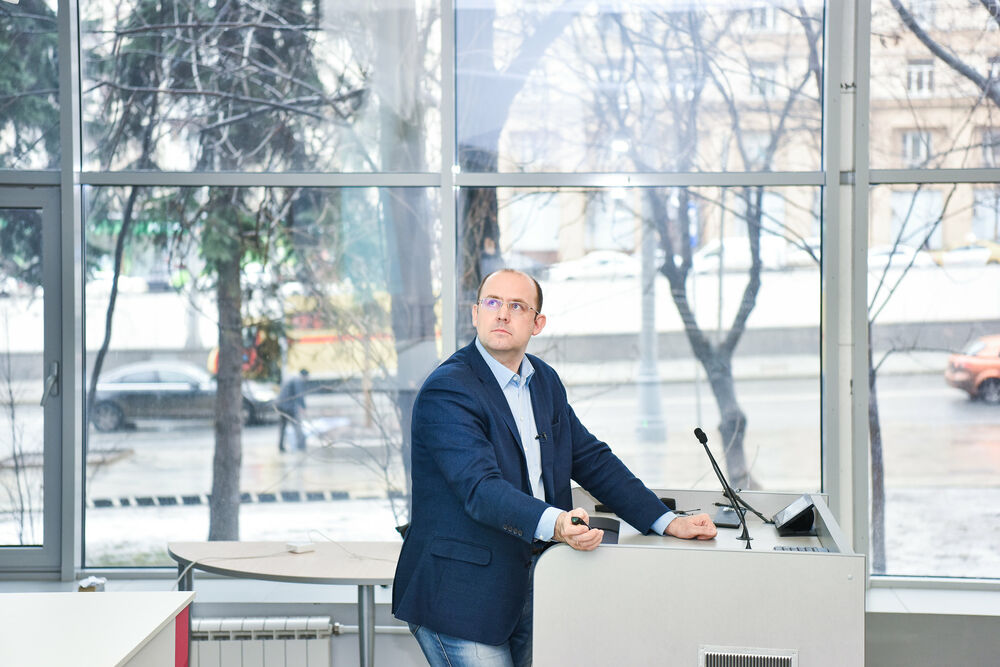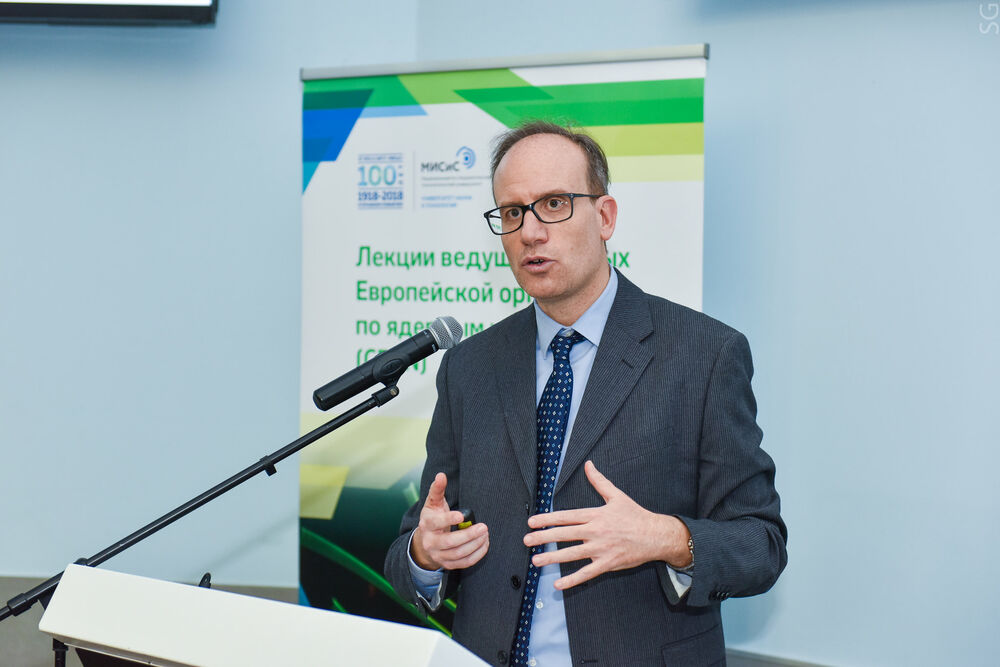The Center for Infrastructure Cooperation and Partnership “MegaScience” unites NUST MISIS research groups working at the largest experimental research complexes (the so-called “MegaScience” class installations) in Russia and abroad. The purpose of these works is to study the fundamental properties of matter, as well as the development of new technologies, materials, techniques and devices within the research programs of these complexes. The priority project implemented by the Center is the project “Promising solutions, technologies, techniques and materials for the search for new physical effects”.
Activities of the Center
Since 2017, NUST MISIS has been implementing the project “Promising solutions, technologies, techniques and materials for the search for new physical effects”. The main goal of the project is to develop promising technologies and materials for the search for new physical effects in experiments at the European Organization for Nuclear Research (CERN), as well as for applications beyond high energy physics. The project partners are well—known scientific and educational centers, such as CERN, INFN, University “Federico II” of Naples, University of Zurich, Imperial College of London, as well as a number of Russian universities and companies. The project was supported by the International Scientific Council of NUST MISIS. The scientific director of the project is Professor of Imperial College of London and NUST MISIS Andrey Golutvin.
New steps in the development of technologies, as a rule, make it possible to study new types of fundamental physical phenomena, and vice versa, fundamental discoveries lead to the creation of new technologies. For measurements of unprecedented high accuracy performed at the maximum energies and intensities of particle fluxes at CERN and other centers, new particle detection technologies are required, as well as new methods for processing the corresponding “big” data. Within the framework of the project “Promising solutions, technologies, techniques and materials for the search for new physical effects”, new techniques and technologies are being developed in the field of radiation-resistant scintillators, silicon track detectors, ultra-high resolution nuclear emulsions, large-scale magnetic protective and spectrometric systems, as well as in the field of big data analysis.
The discovery of the Higgs boson in the ATLAS and CMS experiments at the Large Hadron Collider laid the final brick in the building of the Standard Model. At the same time, today there are firmly established observational facts that the Standard Model is not able to explain: non-zero neutrino masses, the baryon asymmetry of the Universe, the existence of dark matter and dark energy, and others. This motivates both the consideration of theoretical models explaining these phenomena, as well as work on existing experimental facilities and the design of new ones, the data of which will allow us to verify the predictions of such models.
Since 2017, NUST MISIS has been an active member of the LHCb collaboration at the Large Hadron Collider, as well as the SHiP collaboration at the SPS accelerator at CERN. Since 2021, NUST MISIS has joined the SND@LHC collaboration.
The LHCb experiment (from the English Large Hadron Collider beauty experiment) is one of the four main experiments at the LHC, its main goal is to find an answer to one of the most intriguing questions of modern high—energy physics — for what reasons antimatter disappeared from it during the evolution of the Universe from the Big Bang to the present. In the process of data collection and analysis, a number of first-class results were obtained in the field of physics of hadrons containing b-quark, which are most sensitive to CP symmetry breaking (see, in particular,
The SHiP (Search for Hidden Particles) experiment at the SPS (Super Proton Synchrotron) accelerator at CERN is proposed as a project that in some respects successfully complements the experiments at the LHC (see
The importance of discovering any of the new particles to which SHiP is sensitive cannot be overestimated. At the same time, an extensive research program on the physics of tau neutrinos and light dark matter is planned in the experiment, in particular, the first direct experimental observation of tau antineutrinos is expected.
The work within the project is grouped into several thematic blocks, which are focused both on tasks related to the preparation for the next phase of modernization of the LHCb experiment, and on ensuring the construction of the SHiP experimental installation.
Within the framework of the project, an educational program is being implemented, which is interdisciplinary in nature — at the intersection of high energy physics, materials science and data sciences. The first season was successfully implemented in 2018/2019, the fifth is being implemented in 2022. The program consists of 20 classes (from October to April), which focus on the following main topics:
- physics of fundamental properties of matter;
- physics of interaction of radiation and particles with matter and detector technologies;
- principles of obtaining, processing and analyzing physical data.
The program is open to everyone, and is most interesting to physics and engineering students of senior courses who plan to continue their studies in graduate school. Classes are held once a week on Wednesdays from 17:30 to 20:30 in English. Each lesson consists of a general lecture and educational and scientific work on a specific project. Classes are conducted by CERN staff and professors from leading partner universities of the program; Imperial College of London, University “Federico II” of Naples, University of Zurich, EPFL.
The students who have successfully passed the final exam receive a certificate of completion of the course, valuable gifts, as well as the possibility of priority admission to graduate school on the subject of the course to the heads — lecturers of the program.
Participation in the program not only allows you to learn a lot of new and interesting things, but also gives you the opportunity to become a member of an active international team of researchers working on exciting problems at CERN and other research centers around the world.


_1000_1000.jpg)
